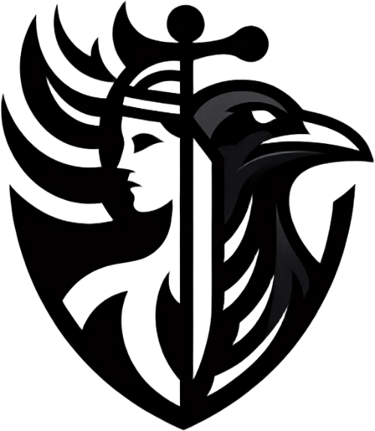Myth as Mirror: Writing Your Name in the Margins of Old Stories
DISPATCHES FROM PURGATORY
Valkyrie
6/28/20253 min read


"The soul is dyed the color of its thoughts," wrote Marcus Aurelius. I like to imagine he inked that line in a moment of smoky introspection, surrounded by candlelight and ghosts. What he meant—what I feel in my bones—is this: the stories we hold close shape us. And none shape me quite like myth.
To read an ancient tale is to stand before a mirror framed in gold leaf and time. These stories—gods with bad tempers, maidens with knives, wolves in disguise—don’t sit quietly in dusty books. They look back. They know you. They whisper.
When I found myself in myths, I didn’t just connect with the collective unconscious—I reclaimed pieces of myself I’d left scattered across years and lifetimes. Myths became a sanctuary, a seduction, and occasionally, a warning. They let me decode my own narrative through the lens of something older, wilder, more beautifully haunted.
When Zeus’s Lightning Strikes a Little Too Close to Home
Zeus and his lightning—dramatic, theatrical, and deeply symbolic. It’s not just divine pyrotechnics. It’s revelation disguised as destruction.
We all have moments like that. A bolt out of nowhere that splits your path clean in two. A betrayal, a realization, a truth too sharp to ignore. Myth tells us: that was never random. That was your call to awaken.
To walk into a story like that, to see your reflection in its thunderous glow, is the first step toward authorship.
Why That Ancient Story Has Your Name All Over It
Every myth is a mirror polished with centuries of longing. These tales cross time and culture because they speak a universal language: heartbreak, courage, hunger, transformation. The hero, the trickster, the shadow self—we meet them not in textbooks but in the morning mirror.
Archetypes aren’t abstract. They are alive in us. They stumble through our mistakes, rise in our moments of grace, and whisper their lines when we forget our own.
Identifying Your Personal Threshold Guardians
In every good myth, there’s a moment when the heroine is stopped. A gate. A glare. A gloved hand saying, “Not yet.” These Threshold Guardians take many forms: rejection letters, inner critics, bad lovers, institutional red tape.
The myth teaches us that these aren’t villains to destroy, but riddles to answer. Their presence means you’re on the cusp of something. They test your readiness. They guard your next chapter.
Fairy Tale Therapy: No Couch Required
Sometimes I read fairy tales like they’re love letters from the subconscious. You don’t need a therapist to know the girl in red is walking toward her own hunger, or that the princess in the tower is more prisoner of her own doubts than the dragon outside.
Fairy tales let us rehearse our terror and desire from behind the safety of metaphor. The curse, the kiss, the forest—all symbols in a language our bones remember.
American Myths vs. Global Reflections
We all know the American flavor of myth—the lone hero, the rugged individual, the bootstraps. But when you look at Cinderella in China, in Egypt, in the Philippines, you begin to see her differently. You see how each version reveals a culture’s fears and fantasies.
Comparative myth is empathy in disguise. It shows us where we overlap, where we diverge, and what we all long for in the dark.
Rewriting Your Personal Mythology (One Dragon at a Time)
The dragon isn’t always a monster. Sometimes it’s burnout. Or fear. Or a habit that no longer fits.
What matters is that the myth gives us permission to slay—or befriend—it. To rewrite the script. To place ourselves not just in the story, but at its helm.
You are the protagonist, the sorceress, the monster, the flame. You are the one who gets to choose what happens next.
So sharpen your metaphors, light your lantern, and step past the gate. Your myth awaits.
© 2025. All rights reserved.
